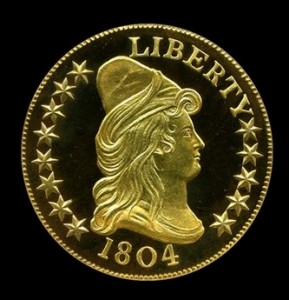 Buying rare coins isn’t monkey business! It takes a lot of money and even more guts to lay out hundreds or even thousands of dollars on a single coin, of course, unless you’re rolling in dough and have plenty of pretty pennies to spend on buying a pretty penny.
Buying rare coins isn’t monkey business! It takes a lot of money and even more guts to lay out hundreds or even thousands of dollars on a single coin, of course, unless you’re rolling in dough and have plenty of pretty pennies to spend on buying a pretty penny.
However, having bought a few pretty pennies myself, I’ve learned a lot about what goes into making a decision to buy a rare coin, and that you don’t want to just go dropping $500 or $1,000 (or much more) on buying rare U.S. coins unless you’re knowledgeable about the rare coin you wish to buy.
Here are 5 lessons I’ve learned about buying rare coins that I wish to share with you:
- Don’t go buying rare coins until you know more about what you want.
They always say buy the book before the coin. Why’s that? Because the rare coin market is full of counterfeits, and many of these fake coins can look quite convincing to the unassuming coin buyer. For example, there are only four “types” of 1909-S VDB pennies that can be authentic (based on placement of the S mintmark, shape of the S, and other characteristics). - Buy rare coins because you like them – not because they’re the hottest item.
Too many coin collectors are chasing what the rest of the coin collecting community wants. Instead, follow the beat of your own drum. If you are an avid Lincoln cent collector like me and desire a 1909-S VDB cent to complete your collection or want a 1916-D dime to finish off your holding of Mercury dimes, then great- you’ll be one of many in pursuit of these popular rare coins. But if buying the somewhat more obscure 1846 Seated Liberty half dime is your idea of the ideal rare coin purchase, then by all means go for it! - Don’t buy rare coins because you want to make money.
The worst mistake any coin collector can make in the rare coin arena is buying rare coins simply because they want to make a quick buck. While it’s true that a great many rare coins have slowly but steadily increased in value over time, many others have flatlined or even fallen in value. Case in point: when the rare coin market collapsed in the late 1980s, the values of many mint state silver coins, such as Walking Liberty half dollars and Morgan dollars, fell precipitously. - Shop around.
You wouldn’t a refrigerator without checking out several department stores and maybe a big box home improvement store or two, right? So, why would you spend an equitable or greater amount of money on buying a rare coin without first checking out all the coin dealers in your area, and maybe even perusing the websites of a few online coin dealers? - Buy from a reputable coin dealer.
Be careful about where you’re buying your rare coins. There are many rare coin dealers out there that are honest and ethical, but unfortunately there are a few bad apples in the rare coin market. There are several signs to look for in a reputable coin dealer, including consistent grading, prices that are roughly in line with average selling prices in value guides, and a fair return policy.
As you gain more experience in buying rare coins, you will get a feel for how the coin market works and better understand what to look for when you are shopping for coins. Buying a rare coin is something that will eventually become a less nerve wracking ordeal and instead become a pleasurable pursuit that will result in a desirable addition to your coin collection and a feeling of true accomplishment.
I’m the Coin Editor here at TheFunTimesGuide. My love for coins began when I was 11 years old. I primarily collect and study U.S. coins produced during the 20th century.
I’m a member of the American Numismatic Association (ANA) and the Numismatic Literary Guild (NLG) and have won multiple awards from the NLG for my work as a coin journalist. I’m also the editor at the Florida United Numismatists Club (FUN Topics magazine), and author of Images of America: The United States Mint in Philadelphia (a book that explores the colorful history of the Philadelphia Mint). I’ve contributed hundreds of articles for various coin publications including COINage, The Numismatist, Numismatic News, Coin Dealer Newsletter, Coin Values, and CoinWeek.
I’ve authored nearly 1,000 articles here at The Fun Times Guide to Coins (many of them with over 50K shares), and I welcome your coin questions in the comments below!





